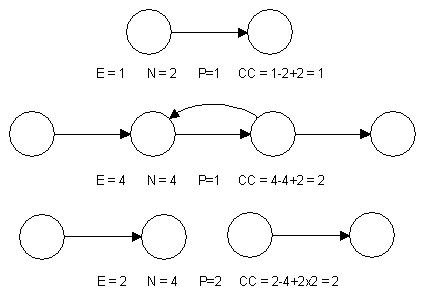| SOFTWARE IN PRACTICE |
|
McCabe Cyclomatic Complexity(Alias: McCabe number)
Fools ignore complexity. Pragmatists suffer it. Some can avoid it. Geniuses remove it. McCabe's cyclomatic complexity is a software quality metric that quantifies the complexity of a software program. Complexity is inferred by measuring the number of linearly independent paths through the program. The higher the number the more complex the code. The Significance of the McCabe NumberMeasurement of McCabe's cyclomatic complexity metric ensures that developers are sensitive to the fact that programs with high McCabe numbers (e.g. > 10) are likely to be difficult to understand and therefore have a higher probability of containing defects. The cyclomatic complexity number also indicates the number of test cases that would have to be written to execute all paths in a program. Calculating the McCabe NumberCyclomatic complexity is derived from the control flow graph of a program as follows: Cyclomatic complexity (CC) = E - N + 2P Where: P = number of disconnected parts of the flow graph (e.g. a calling program and a subroutine) E = number of edges (transfers of control) N = number of nodes (sequential group of statements containing only one transfer of control) Examples of McCabe Number Calculations
|

|